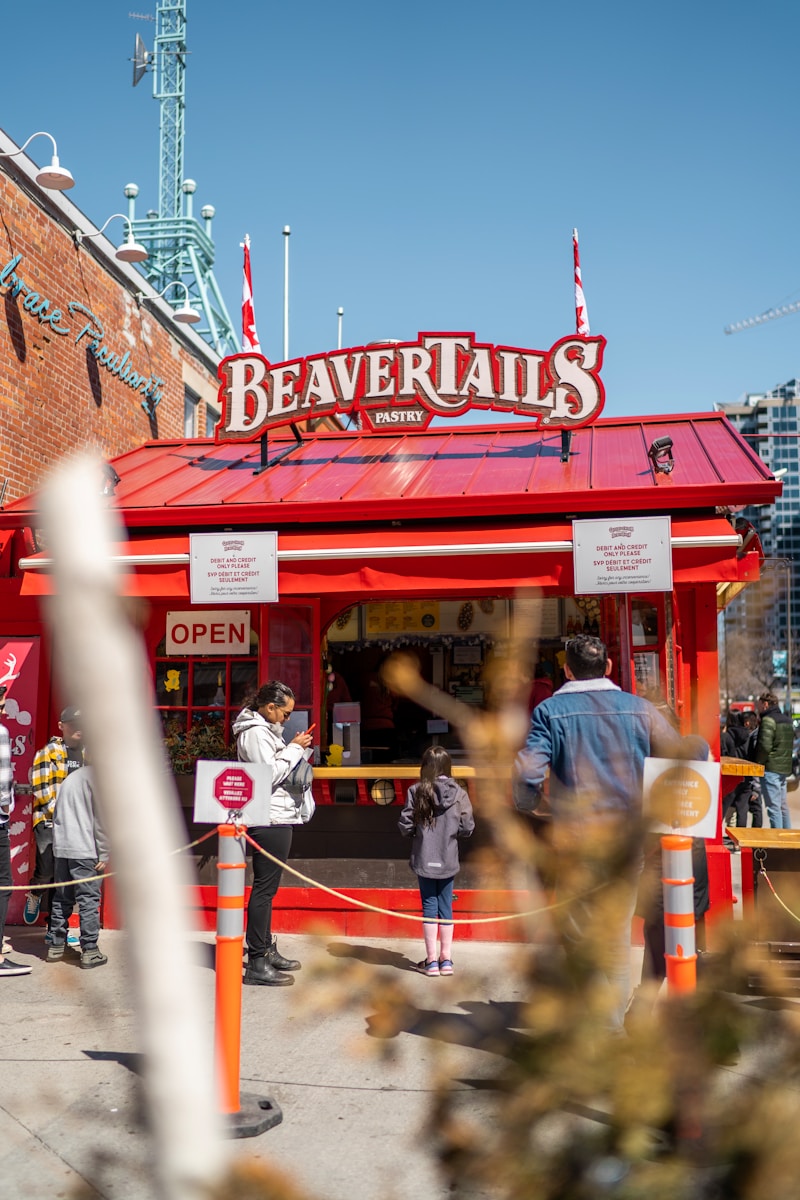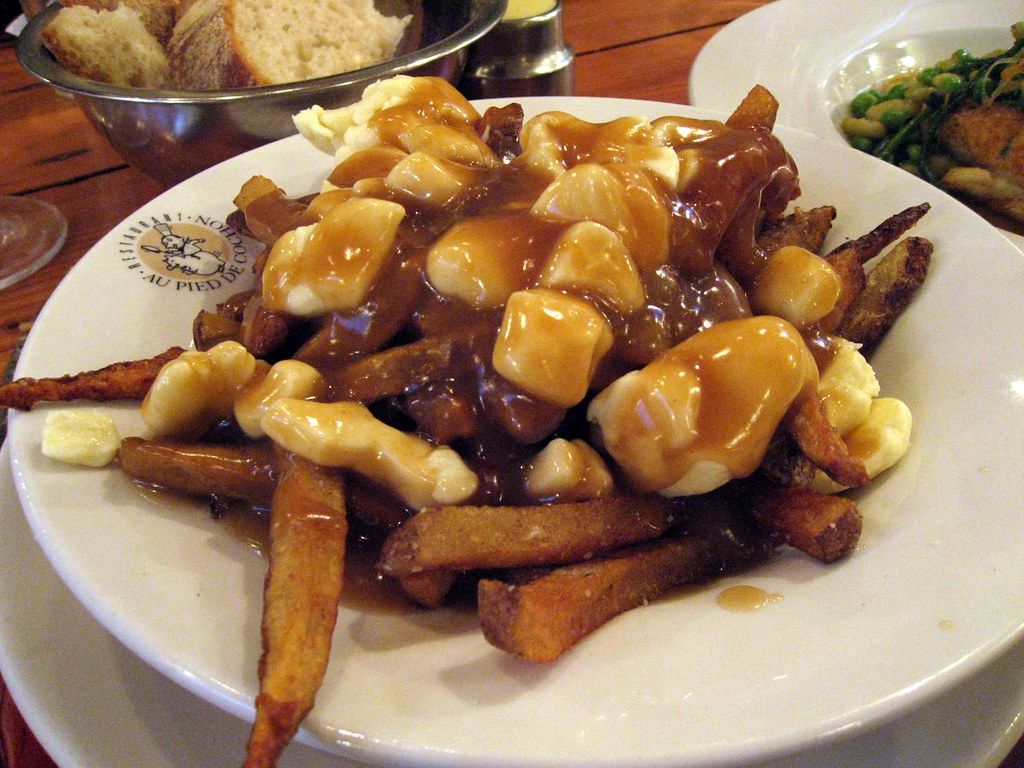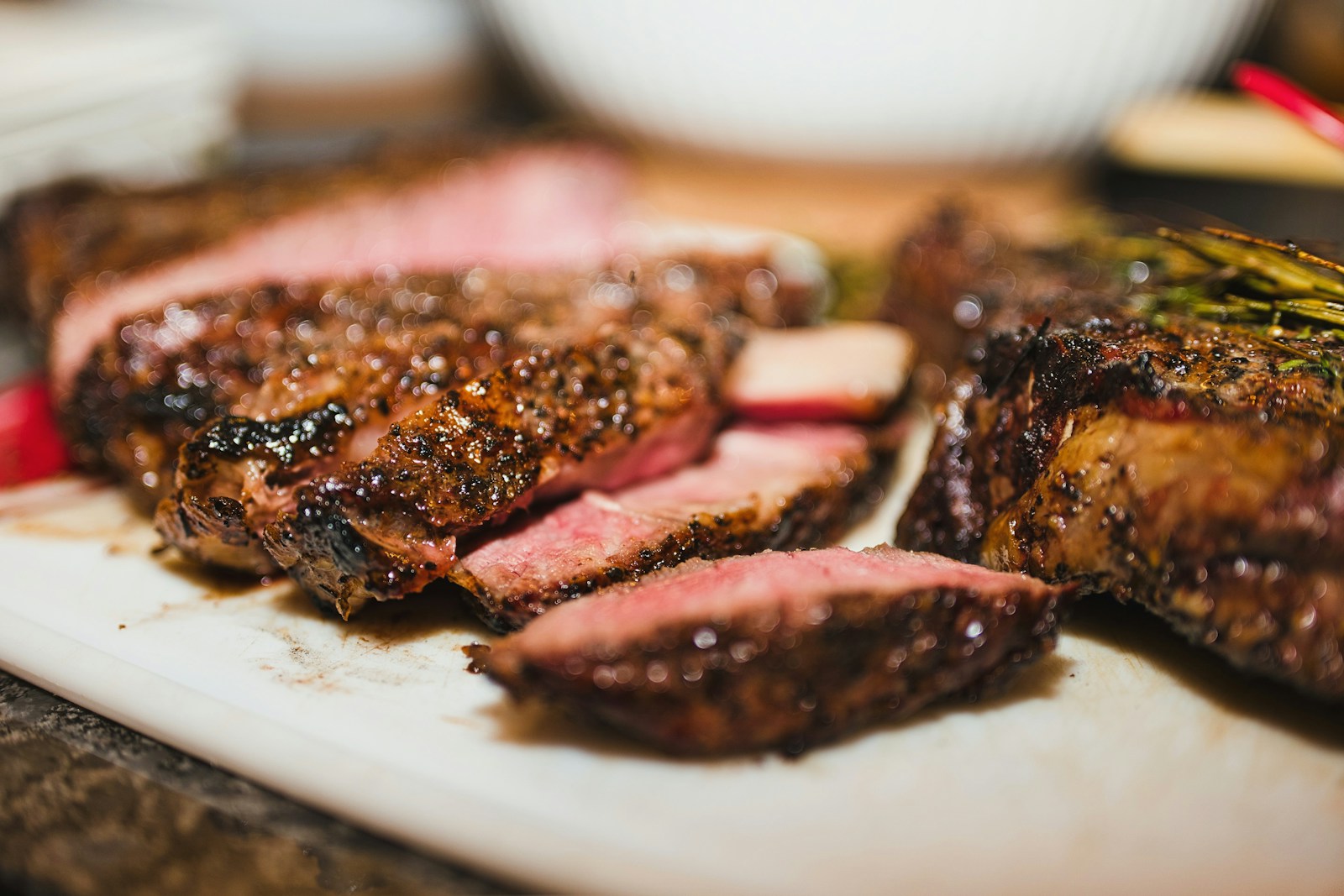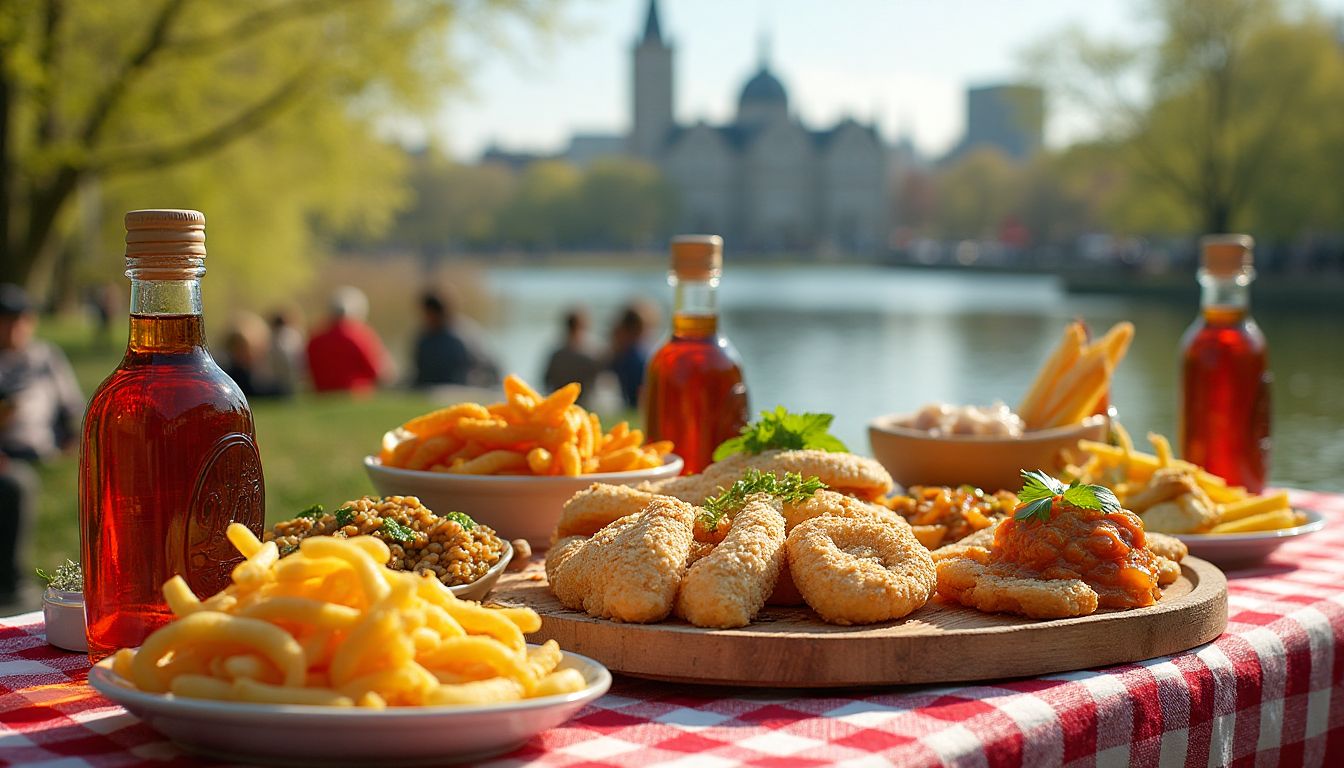What is the National Food of Ottawa? A Flavorful Journey Through Canada’s Capital
If you’ve ever found yourself standing by the Rideau Canal, clutching a steaming plate of poutine while debating whether gravy counts as a beverage, you’ve already stumbled into the delicious chaos that is Ottawa’s culinary identity. Canada’s capital isn’t just about politics and picturesque winters—it’s a city where food tells stories, from Indigenous feasts to French-Canadian comfort classics and modern fusion experiments. But what really is Ottawa’s national food? Is it the crispy, gravy-drenched poutine? The buttery, cinnamon-dusted BeaverTails? Or something deeper, like the way a humble tourtière pie whispers tales of centuries-old traditions?
Food historians like Michael Pollan have long argued that a city’s signature dishes are cultural time capsules. Meanwhile, chefs like Richard Francis (Ottawa’s own "poutine evangelist") and researchers at the University of Ottawa have dissected everything from maple syrup’s molecular magic to the sociology of shawarma shops. Spoiler: Ottawa’s food scene is less about picking a single "national dish" and more about a delicious identity crisis—one where Indigenous bannock, Quebecois tourtière, and Lebanese garlic sauce collide in glorious harmony.
The Historical Roots of Ottawa’s Culinary Identity
Indigenous Influences: Bannock, Maple, and the Original Farm-to-Table
Long before poutine became a drunk-food icon, the Algonquin people were turning local ingredients into survival (and celebration) staples. Imagine Ottawa 500 years ago: the smell of bannock (a simple, fire-cooked bread) mingling with roasting venison and maple syrup reducing over open flames. Today, spots like Sweetgrass Aboriginal Bistro revive these traditions with dishes like cedar-planked trout and three-sisters stew—proof that Ottawa’s first food culture never left, it just got a gourmet upgrade.
French-Canadian Heritage: Gravy, God, and the Great Tourtière Debate
When French settlers rolled into the Ottawa Valley, they brought two sacred things: Catholicism and an unshakable belief that any meal without butter is a cry for help. The Quebecois influence birthed Ottawa’s love affair with tourtière (a spiced meat pie that sparks family feuds over "correct" recipes) and pea soup so thick it could double as insulation. Fun fact: Ottawa’s version of poutine often sneaks in extra cheese curds—a silent rebellion against Quebec’s portion control.
British and Irish Contributions: Pub Grub and the Art of Drunk Carb-Loading
Thanks to 19th-century immigrants, Ottawa inherited two things: a stunning Parliament building and the belief that potatoes are a food group. British-style fish and chips (doused in malt vinegar, naturally) became pub staples, while Irish soda bread found its way into Ottawa’s bakeries. The real legacy? The city’s enduring love of "hangover cuisine"—because nothing soothes a post-hockey game headache like a poutine-and-ale combo at The Kelsey’s.

Iconic Dishes of Ottawa
When it comes to Ottawa’s food scene, a few dishes stand out like a maple tree in a forest. Let’s start with poutine, the gooey, gravy-covered, cheese curd-topped masterpiece that’s as Canadian as saying “eh.” This dish, which originated in Quebec, has found a second home in Ottawa. Whether you’re grabbing a late-night snack after a Senators game at the Canadian Tire Centre or enjoying a gourmet version at a high-end bistro, poutine is the ultimate comfort food. It’s the dish that says, “Hey, life’s messy, but it’s delicious.”
Next up is the BeaverTail, a sweet, deep-fried pastry shaped like—you guessed it—a beaver’s tail. This treat became famous after being sold at the Rideau Canal Skateway during Winterlude. Imagine biting into a warm, cinnamon-sugar-coated piece of heaven while skating on the world’s largest naturally frozen skating rink. It’s the kind of experience that makes you want to hug a beaver (but don’t—they’re not fans of that). BeaverTails have become so iconic that even President Obama took a bite during his visit to Ottawa. If it’s good enough for a president, it’s good enough for the rest of us.
Then there’s tourtière, the French-Canadian meat pie that’s a staple during the holidays. This savory dish, typically filled with ground pork, beef, or venison, is like a warm hug from your grandma—only flakier. It’s a dish that carries centuries of tradition, and in Ottawa, it’s often served with a side of nostalgia. Whether you’re enjoying it at a family gathering or grabbing a slice from a local bakery, tourtière is a reminder of the city’s French roots and its love for hearty, comforting food.
Multicultural Influences on Ottawa’s Food Scene
Ottawa’s food scene is like a melting pot—or more accurately, a poutine pot. The city’s diverse immigrant communities have brought their flavors, spices, and culinary traditions, creating a food scene that’s as multicultural as it is delicious. Take Lebanese shawarma, for example. This Middle Eastern dish has become a local obsession, with shawarma joints popping up on every corner. Whether you’re grabbing a quick bite at Shawarma Palace or trying a gourmet version at a downtown restaurant, shawarma is a testament to Ottawa’s love for global flavors.
Then there’s Vietnamese pho, the soul-warming noodle soup that’s perfect for Ottawa’s chilly winters. Pho is more than just a dish—it’s an experience. From the fragrant broth to the tender slices of beef, every spoonful is a journey to the streets of Hanoi. And let’s not forget Indian butter chicken, a dish so rich and creamy it could make a poutine jealous. Whether you’re dining at a curry house or grabbing takeout, butter chicken is a flavorful reminder of Ottawa’s multicultural fabric.
Ottawa’s chefs are also getting creative with fusion cuisine, blending traditional Canadian dishes with global flavors. Imagine a poutine topped with kimchi or a tourtière filled with spicy chorizo. These innovative dishes are a reflection of Ottawa’s evolving culinary identity, where the old meets the new in the most delicious way. The city’s food festivals, like PoutineFest and the Ottawa Food and Wine Show, celebrate this diversity, offering a taste of the world on a single plate. So, whether you’re a foodie or just someone who loves to eat, Ottawa’s multicultural food scene has something for everyone.
The Role of Local Ingredients in Ottawa’s Cuisine
Ottawa’s food scene isn’t just about recipes—it’s about the ingredients that tell the story of the land. The city’s embrace of local and seasonal produce is a testament to its commitment to sustainability and community.
Farm-to-Table Movement: The farm-to-table philosophy has taken root in Ottawa, with restaurants proudly sourcing ingredients from nearby farms. This isn’t just a trend—it’s a way of life. By supporting local farmers, Ottawa’s culinary scene ensures freshness while reducing the carbon footprint. Places like Beckta Dining & Wine and Atelier are leading the charge, crafting menus that change with the seasons.
Seasonal Dishes: Ottawa’s chefs are masters of adaptation. In the spring, you’ll find dishes bursting with asparagus and rhubarb. Summer brings vibrant salads and berry desserts, while fall is all about squash, apples, and hearty root vegetables. Winter? Think comforting stews and braised meats. This seasonal approach not only highlights the best of what’s available but also creates a deeper connection between diners and the land.
Maple Syrup: No discussion of Ottawa’s cuisine is complete without mentioning maple syrup. This liquid gold is more than a topping—it’s a cultural icon. From drizzling it over pancakes to incorporating it into savory dishes like maple-glazed salmon, Ottawa’s chefs find endless ways to celebrate this quintessential Canadian ingredient. Local producers like Fulton’s Pancake House & Sugar Bush keep the tradition alive, offering a taste of Ottawa’s heritage.
Why does this matter? Because every bite tells a story—a story of Ottawa’s farms, its seasons, and its people.
The Future of Ottawa’s Culinary Identity
Ottawa’s food scene isn’t just evolving—it’s thriving, thanks to a blend of sustainability, innovation, and a growing appetite for culinary tourism.
Sustainability in Food: The city is stepping up its sustainability game. Restaurants are reducing food waste, adopting compostable packaging, and even growing their own herbs and vegetables. Organizations like Ottawa Food Bank are tackling hunger while promoting food security. Meanwhile, plant-based options are on the rise, catering to a more eco-conscious audience.
Culinary Tourism: Ottawa is becoming a destination for food lovers. Events like the Ottawa PoutineFest and the Ottawa Wine and Food Festival draw crowds eager to sample the city’s flavors. Food tours, like those offered by C’est Bon Cooking, let visitors explore Ottawa’s culinary hotspots while learning about its history.
Innovation and Technology: Technology is reshaping how Ottawans eat. Food delivery apps like Uber Eats and SkipTheDishes make it easier than ever to enjoy a taste of Ottawa at home. Virtual cooking classes, like those hosted by Ottawa Culinary Arts Institute, bring the city’s flavors into kitchens worldwide.
What’s next for Ottawa’s food scene? The possibilities are endless—from AI-driven food recommendations to zero-waste restaurants. One thing’s for sure: Ottawa’s culinary identity is as dynamic as the city itself.
AI Solutions: How Could AI Help?
If AI were tasked with defining and promoting Ottawa’s national food, it could revolutionize the culinary landscape in ways that are both innovative and deeply rooted in tradition. Here’s how:
- Analyze Culinary Trends: Use machine learning algorithms to sift through vast amounts of data from social media, restaurant menus, and food blogs to identify emerging trends. Platforms like IBM Watson could be employed to predict the next big dish in Ottawa.
- Personalized Recommendations: Develop AI-driven apps that suggest dishes and restaurants based on individual preferences and dietary needs. Companies like Zomato and Yelp could integrate these features to enhance user experience.
- Virtual Cooking Assistants: Create AI-powered tools to teach users how to cook traditional Ottawa dishes at home. Imagine a virtual assistant like Amazon Alexa guiding you step-by-step through the process of making the perfect poutine.
- Sustainability Solutions: Implement AI to optimize supply chains, reduce food waste, and promote sustainable practices in Ottawa’s food industry. Companies like Ocado are already using AI to manage their logistics efficiently.
- Cultural Preservation: Use AI to document and preserve traditional recipes and culinary practices for future generations. Projects like Google Arts & Culture could be expanded to include culinary heritage.
Action Schedule/Roadmap
Day 1: Assemble a team of culinary experts, historians, and AI specialists to define the scope of the project. Key personnel could include representatives from University of Toronto and MIT.
Day 2: Begin data collection on Ottawa’s culinary history, including traditional recipes, cultural influences, and modern trends. Utilize resources from the Library and Archives Canada.
Week 1: Develop a machine learning model to analyze culinary trends and identify key dishes. Collaborate with TensorFlow for model development.
Week 2: Launch a survey to gather public input on Ottawa’s national food. Use platforms like SurveyMonkey for data collection.
Month 1: Create a prototype for an AI-driven app that provides personalized food recommendations. Partner with Apple for app development.
Month 2: Partner with local restaurants and food festivals to promote Ottawa’s culinary identity. Engage with Ottawa Tourism for marketing support.
Year 1: Implement AI solutions to optimize supply chains and reduce food waste in Ottawa’s food industry. Collaborate with Walmart for supply chain management.
Year 1.5: Launch a virtual cooking assistant to teach users how to prepare traditional Ottawa dishes. Integrate with YouTube for video tutorials.
Year 2: Publish a comprehensive report on Ottawa’s national food, supported by AI-driven insights and public feedback. Distribute the report through United Nations channels for global reach.
The Heart and Soul of Ottawa’s Culinary Identity
Ottawa’s culinary identity is a rich tapestry woven from its history, culture, and diverse communities. From the iconic poutine to the innovative fusion dishes of today, the city’s food scene is a reflection of its vibrant spirit. By embracing sustainability, technology, and cultural preservation, Ottawa is poised to continue evolving as a culinary destination. Whether you’re savoring a BeaverTail by the Rideau Canal or enjoying a hearty tourtière at a local bistro, you’re experiencing the heart and soul of Ottawa’s national food.
As we look to the future, the integration of AI and other technological advancements offers exciting possibilities for preserving and promoting Ottawa’s culinary heritage. Imagine a world where every bite of poutine is a step back in time, guided by the wisdom of AI and the passion of local chefs. The journey of Ottawa’s food is far from over; it’s just beginning to unfold in ways we can only imagine.
So, what’s your favorite Ottawa dish? How do you see technology shaping the future of food in our city? Share your thoughts and join the conversation. And don’t forget to subscribe to our newsletter for more insights and updates. Become a permanent resident of iNthacity: the "Shining City on the Web" and be part of a community that celebrates the best of Ottawa’s culture and cuisine.

Frequently Asked Questions (FAQ)
What is the national food of Ottawa?
While Canada doesn’t have an official "national dish," Ottawa’s most iconic foods include poutine (fries with cheese curds and gravy), tourtière (a spiced meat pie), and BeaverTails (a fried dough pastry). These dishes reflect Ottawa’s French-Canadian roots and multicultural influences.
Where can I find the best poutine in Ottawa?
Some local favorites include:
- Smoke’s Poutinerie – Known for creative toppings.
- Elgin Street Diner – A late-night staple.
- La Banquise (a Montreal chain with Ottawa locations) – Classic Quebec-style poutine.
For more Ottawa food spots, check out Ottawa’s local food scene.
Is Ottawa’s food influenced by Indigenous cuisine?
Yes! The Algonquin people, Ottawa’s original inhabitants, introduced ingredients like wild game, maple syrup, and corn. Some modern restaurants, like Kū-Kŭm Kitchen, blend Indigenous traditions with contemporary cooking.
What’s unique about BeaverTails?
Born in Ottawa in the 1970s, BeaverTails are hand-stretched pastries topped with cinnamon sugar, Nutella, or fruit. They’re a must-try at the Rideau Canal in winter.
How has immigration shaped Ottawa’s food?
Immigrant communities brought global flavors:
- Lebanese: Try shawarma at Shawarma Palace.
- Vietnamese: Sample pho in Chinatown.
- Indian: Butter chicken at Host India.
Ottawa’s food festivals celebrate this diversity.
Is Ottawa’s food scene sustainable?
Many restaurants, like Union 613, focus on farm-to-table dining. The city also has zero-waste initiatives and vegan spots like The Green Door.
Can I cook Ottawa’s national dishes at home?
Absolutely! Here are easy recipes:
- Classic poutine from Food Network Canada.
- Tourtière from AllRecipes.
For more Ottawa food adventures, visit our Ottawa guide.
Wait! There's more...check out our gripping short story that continues the journey: The Archivist
Disclaimer: This article may contain affiliate links. If you click on these links and make a purchase, we may receive a commission at no additional cost to you. Our recommendations and reviews are always independent and objective, aiming to provide you with the best information and resources.
Get Exclusive Stories, Photos, Art & Offers - Subscribe Today!



























Post Comment
You must be logged in to post a comment.